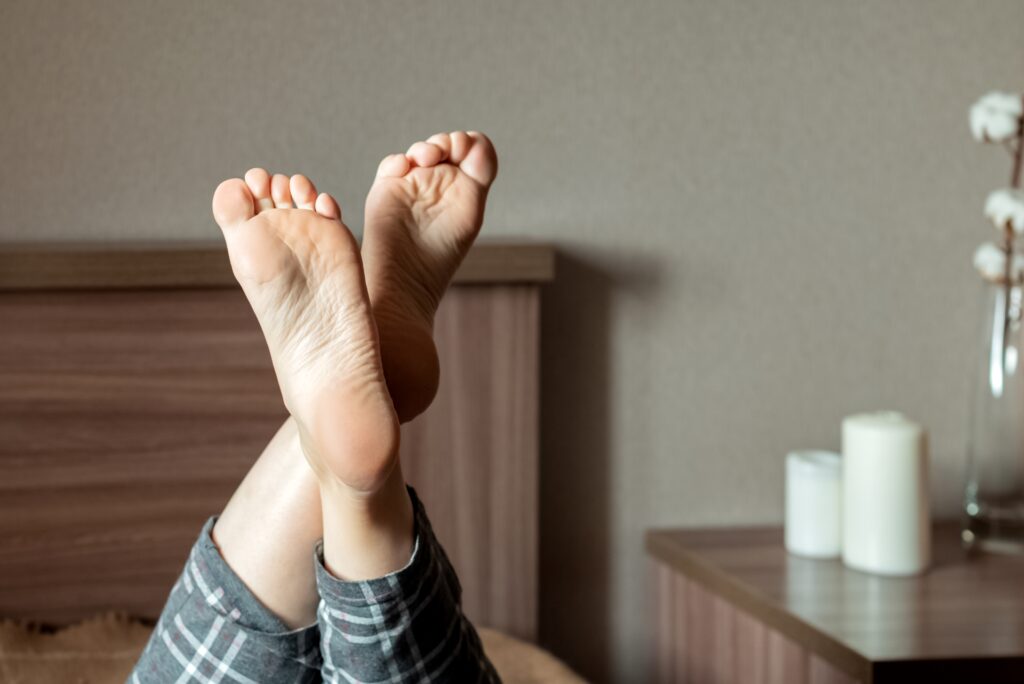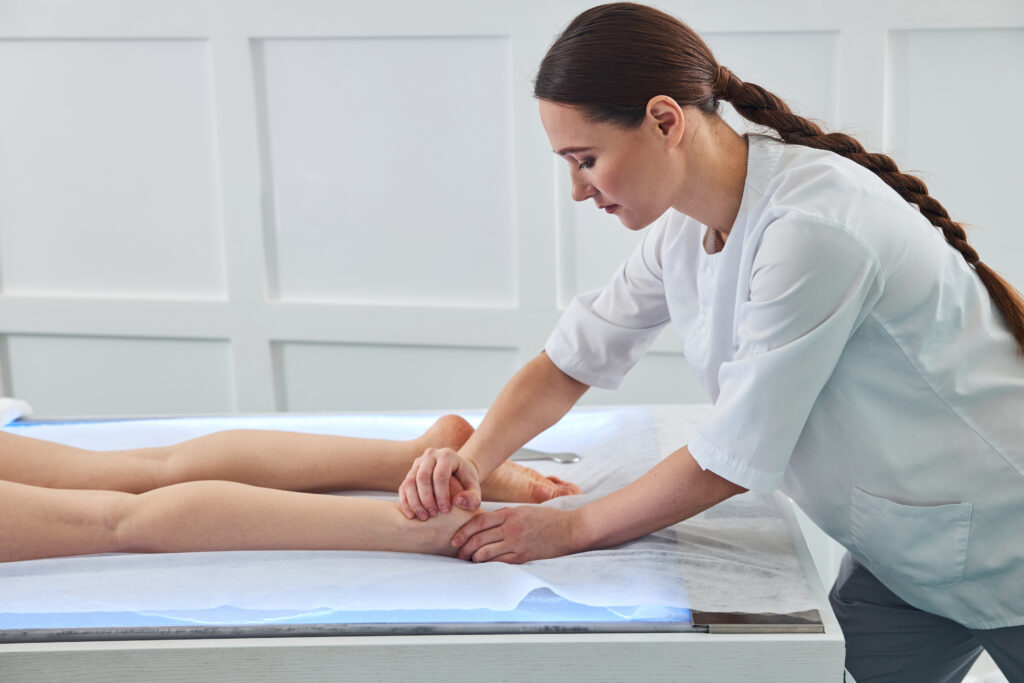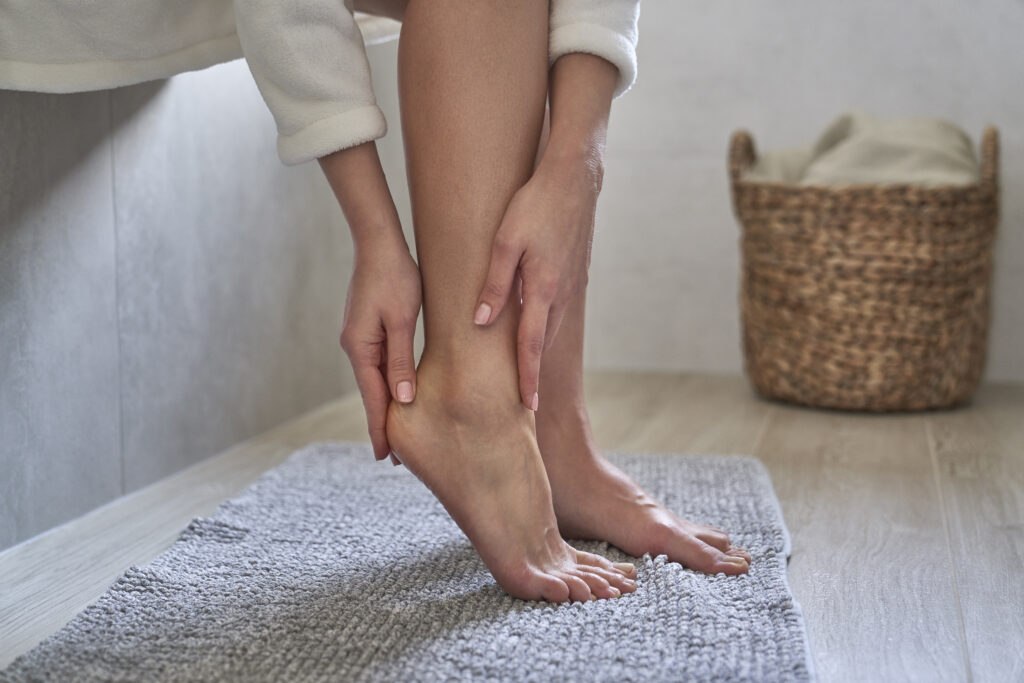Heel spurs can be a painful inconvenience. Heel spurs form when calcium deposits on the bottom of your heel bone. For some people, putting pressure on this spur can cause serious pain. While some may never feel their heel spurs, others might find it difficult to walk.
Luckily, there are ways to manage your pain. Heel spurs are most often diagnosed by X-rays that reveal the calcium deposit. Once heel spurs have been identified as the source of your pain, treatment depends on its severity. In some cases, a change in footwear is all that is needed to ease symptoms. Ice and over-the-counter pain relievers may also temporarily relieve mild pain. Exercise and physical therapy have also been shown to reduce symptoms of heel spurs. Since the pain is often a result of inflammation, anti-inflammatories might be prescribed to manage the spur. In severe cases, surgery may be necessary.
 Heel Spur
Heel Spur
Heel spurs cause pain in the heel of your foot. This pain can be felt while walking, running, or jogging. It may be worse while barefoot or after a long rest. Some people may believe they have heel spurs when in reality they have plantar fasciitis. Plantar fasciitis is chronic inflammation of the plantar fascia, a ligament in your foot. This ligament supports the arch of your foot, absorbing stress when you walk. When it becomes injured or tears, inflammation can cause pain in the heel.
Since both heel spurs and plantar fasciitis cause heel pain, doctors perform some tests to identify which condition is responsible. Plantar fasciitis can cause pain, swelling, and tightness in the foot. Heel spurs have similar symptoms, but the pain may be more concentrated in the heel bone. X-rays are the best way to identify heel spurs, since they are made of calcium attached to bone.
What is a Heel Spur
A heel spur is a bony growth on the inside of your foot. It is made from calcium that deposits on your heel bone. It often forms as a response to stress on the foot, specifically the plantar fascia, hence the similarities in symptoms. People who spend a lot of time on their feet are more likely to develop heel spurs. Waitresses, teachers, and athletes are some of the most common victims of heel spurs. People with higher arches or flat feet may be more susceptible to these painful growths. Some research even indicates women are more likely than men to develop heel spurs.
Repeated pressure on the foot and gait disorders are common causes of heel spurs. Over time, repeated pressure can tear muscles or membranes that cover the heel bone. It may take months for heel spurs to form as a response to this repeated stress.
 Heel Spur Pain
Heel Spur Pain
Once your doctor has diagnosed your heel spur, you can now treat the problem. For less severe cases, managing the pain may be as simple as resting your foot. Oral anti-inflammatories can also be used to reduce inflammation at the site of the pain. Sometimes, people with heel spurs may require customized footwear. Shoes or inserts that support the arch of your foot can relieve some heel spur pain.
In some instances, surgery may be the best course of action. The surgery is called “calcaneal spur reduction”, named after the calcaneus heel bone. It can be performed as either open surgery or endoscopic surgery. Open surgery will involve a large opening and tools while endoscopic surgery uses a scope and smaller tools. Typically, open surgery is required to remove all of the bone spur.
There are two types of calcaneal spur reduction depending on where the spur is located. Inferior heel spur surgery removes spurs caused by plantar fasciitis. Surgery to correct plantar fasciitis is often performed alongside this surgery.
Posterior heel spur surgery removes spurs near the Achilles tendon. This surgery is a little more complicated since it might involve removing and reattaching the Achilles tendon.
There are some risks associated with surgery. Heel spur reduction may cause more foot and heel pain. It can also lead to numbness in the feet. In some instances, surgery could result in flat feet, hammertoes, and heel fractures.
It usually takes three weeks to recover from heel spur surgery. For some people, it may take longer. Full recovery could take up to three months. Depending on the severity of the surgery, patients may need a cast and crutches. Unfortunately, recovery will involve staying off of your feet for a while. This can be difficult for athletes or workers who spend a lot of time on their feet. It’s important to take the time to heal properly in order to avoid straining your foot further.
 Treating Heel Spurs
Treating Heel Spurs
Treating heel spurs can be very simple once you reach out to a specialist. If you have symptoms of heel spurs, it’s important to confirm with a doctor. Heel pain can be a symptom of several different ailments. If you have heel pain that is worse after long periods of rest, you may be suffering from heel spurs. Heel spurs also cause pain that is worse when barefoot.
Over time, this pain may make walking very difficult. This is problematic for the people most at risk of heel spurs. People who spend a lot of time on their feet can’t afford to suffer from heel pain.
Heel spurs can be treated with changes in exercise, medication, and footwear. Footwear will often support the arches of the feet, hopefully relieving pressure on the heel spur. In the most severe cases, surgery may be the best option. Surgery may cause side effects that could worsen heel pain. It may also cause other issues like flat feet or hammertoes.
If you believe you have heel spurs, contact the specialists at the Foot and Ankle Specialists of Illinois. Only a doctor can confirm the cause of your heel pain. Once the cause is determined, our specialists can find the right treatment plan for you.

